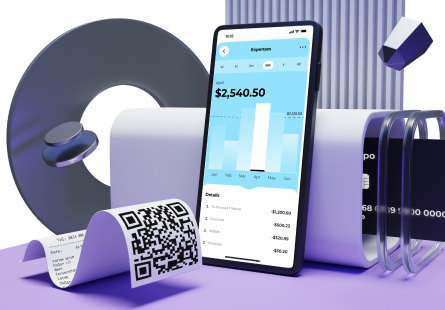Across industries, businesses are increasingly adopting digital transformation to become more efficient and competitive in the digital era. While this is a huge step to take, ignoring this trend can turn into lagging behind the competition and losing customers.
In this article, we’re taking a closer look at digital transformation, providing the key strategies and technologies driving it and exploring eight remarkable examples of companies that have successfully navigated their digital transformation journeys.
What is digital transformation?
Digital transformation means incorporating digital technologies into every aspect of an organisation, revolutionising how it operates and interacts with its stakeholders. It entails the adoption of cutting-edge technologies like cloud computing, artificial intelligence (AI) and data analytics to drive innovation, enhance operational efficiency and create value.
Besides embracing advanced technology, digital transformation involves a fundamental shift in mindset, culture and business models. It empowers companies to become more agile and customer-centric, unlocking new opportunities for business growth.
Why are businesses adopting digital transformation?
Today, businesses are massively embarking on digital transformation projects, and for a good reason.
Most modern consumers are digital-savvy and expect seamless, personalised experiences. Embracing digital transformation allows businesses to meet these expectations, improve customer service and build long-term customer relationships.
In addition, digital transformation offers opportunities for improved operational efficiency and cost savings through automation and streamlined processes, enabling companies to optimise their workflows, enhance productivity and reduce manual errors.
Moreover, digital transformation gives access to advanced analytics capabilities, providing businesses with valuable insights for more informed decision-making. One of the most prominent cases is the implementation of AI in fintech, which enables analysing large volumes of data to support data-driven decision-making, portfolio management and risk modelling, leading to more accurate predictions and improved investment strategies.
Digital transformation examples
Digital transformation strategy examples in banking
In this fast-paced world, people crave seamless and convenient financial experiences more than ever before, driving financial institutions to innovate their offerings. Furthermore, today’s evolving digital environment calls for improved security practices to shield sensitive customer data and assets. These are the main reasons why banks are replacing their legacy systems with innovative digital solutions.
Adopting mobile banking, digital wallets, robotic process automation, artificial intelligence and machine learning, blockchain technology and cloud computing are major cases for digital transformation in the banking industry.
A real-world example: JPMorgan Chase & Co
One excellent example of digital transformation in banking is JPMorgan Chase & Co. JPMorgan Chase & Co (JPMorgan) is the largest bank in the US and the world’s largest bank by market capitalization, which has a legacy dating back to 1799.
JPMorgan has invested heavily in transforming its systems and expanding its digital capabilities to improve services and increase customer value. As part of its digital transformation strategy, JPMorgan implements cutting-edge technologies such as artificial intelligence, Big Data, blockchain, cloud and robotics.
The company has also reshaped its customers’ mobile banking experience by updating their mobile apps with state-of-the-art digital and personalised features.
According to JPMorgan, beyond benefiting their customers by offering them personalised experiences and an ultimately secure financial ecosystem, their shift to digital has also improved their business efficiency. For instance, they achieved a 99% straight-through processing rate on $5 trillion daily wholesale payments and reduced the cost per check deposits by 94%. Moreover, thanks to its digital transformation efforts, JPMorgan saves hundreds of millions by adopting paperless statements.
Digital transformation examples in retail
While retail has always been massively focused on customer needs, embracing digital transformation is imperative for staying competitive in this sector. Both e-commerce retailers and click-and-mortar businesses are adopting digital strategies to improve their internal processes and customers’ shopping experiences.
The most common digital transformation examples in retail include launching a branded mobile app, making personalised offers based on customer data and implementing extended reality to give customers an opportunity to virtually try on clothes or makeup or see how a piece of furniture would fit in their interiors.
A real-world example: Nike
A decades-long retail leader, Nike is a genuine digital visionary. According to Nike’s recent earnings reports, digital channels and apps account for around 26% of the company’s revenues.
In the years just before the COVID-19 outbreak, Nike made some significant digital investments, including the release of its mobile app suite (NIKE, SNKRS, NTC (Nike Training Club) and NRC (Nike Run Club). They also introduced a chatbot to improve customer service and give personalised product recommendations.
Additionally, Nike has made considerable investments in data science technology by acquiring a data integration platform, Datalogue, and two predictive analytics tools, Zodiac and Celect.
In November 2021, Nike launched Nikeland, a Roblox-hosted metaverse allowing users to browse products, develop avatars, design sneakers, buy NFTs and participate in mini-games. After a while, Nike acquired RTFKT, a digital sneaker company, to assist them with expanding into the NFT environment. In the spring of 2022, Nike and RTFKT presented CryptoKicks Dunk Genesis, an impressive collection of 20,000 NFT footwear users can buy and wear in the metaverse.
By making the most of digital innovations to improve digital experiences and leverage data analytics, the company has seen a significant increase in sales.
Examples of digital transformation in logistics
In the logistics industry, digital transformation is primarily driven by the need to decrease operating costs, enhance customer service and expand revenue streams.
One of the dominant digital transformation trends in logistics is the adoption of IoT. This technology enables the connectivity of physical objects, vehicles and devices to collect and exchange data, improving supply chain visibility and asset tracking.
Other prominent examples of embracing digital transformation in logistics include adopting blockchain technology to enhance transparency, traceability and security in logistics operations, Big Data to access data from various sources and use it for decision-making, AI and ML to automate repetitive tasks, optimise routing and scheduling, perform predictive maintenance and enable intelligent demand forecasting, and robotics to streamline order picking, inventory management and warehouse operations.
A real-world example: UPS
UPS (United Parcel Service) is a multinational American package delivery and supply chain management provider with a global ground delivery volume of 20 million packages and documents daily. The company was exploring possibilities to choose the most efficient delivery routes, which resulted in the launch of ORION, UPS’s proprietary route optimisation system.
They attached GPS tracking equipment and sensors to their trucks to collect and analyse data on routes and driver behaviour to discover areas for improvement. ORION is based on a complex algorithm that helps analyse large amounts of data to evaluate the optimal routes.
Thanks to ORION, the company managed to decrease fuel consumption to 10 million gallons per year, which led to impressive cost savings and reducing their carbon footprint.

Digital transformation examples in real estate
Technological advancements have created new possibilities for real estate professionals, enabling immersive property experiences, data-driven insights, intelligent automation and personalised customer interactions.
One of the most common digital transformation examples in real estate is incorporating online property listings that allow users to search and evaluate property from anywhere, reducing the need for physical visits.
More advanced digital initiatives, VR (virtual reality) and AR (augmented reality), have enabled immersive experiences in real estate. Virtual reality tours give potential buyers or tenants a realistic sense of space and layout, allowing them to explore properties without being physically present. Augmented reality helps overlay property information, such as room dimensions or design options, onto real-world views.
Lastly, cutting-edge data analytics tools help real estate professionals obtain insights into market trends, pricing and property performance, facilitating informed decision-making and developing data-driven business strategies.
A real-world example: Coldwell Banker
Coldwell Banker is a US real estate franchise founded in 1906. The company has around 3,000 offices around the globe. The company has embraced digital transformation to enhance its services and adapt to the evolving real estate landscape.
They have implemented various digital initiatives, including a robust online platform that provides agents and customers with access to property listings, market data and collaboration tools. Coldwell Banker has also incorporated virtual property tours to maximise customer engagement.
As a result of its digital transformation efforts, Coldwell Banker has improved the efficiency of operations, increased reach and visibility and provided a more seamless and personalised experience for its clients.
Digital transformation strategy examples in education
The field of education has been significantly impacted by digital transformation, leveraging technology to make education more accessible, enhance learning experiences, streamline administrative processes and foster collaboration among students, educators and institutions.
One of the prominent digital transformation strategy examples in education is the integration of learning management systems (LMS). These platforms provide a centralised online space where educators can deliver course materials, assignments and assessments while students can access resources and submit their work.
Another groundbreaking digital transformation initiative in education is adopting interactive and immersive technologies. Virtual reality (VR) and augmented reality (AR) help create immersive learning experiences by providing virtual environments that simulate real-world scenarios.
Similar to other industries, the education sector is leveraging data analytics to track student progress and derive insights into areas for improvement, personalise learning experiences and provide timely support to ensure student success.
A real-world example: Harvard University
Established in 1636, Harvard University has undergone a significant digital transformation to adapt to the digital era. Through platforms like HarvardX and Harvard Extension School, the university offers various online courses, professional certificates and degree programs, providing flexible learning opportunities for individuals worldwide.
In addition to online courses, Harvard adopted technology to enhance research collaboration and access to scholarly work. The Harvard Library Digital Collections serve as a vast digital repository of resources, including digitised manuscripts, rare books, archival materials and academic publications, allowing researchers and students from around the globe to explore and utilise these resources remotely.
Harvard also employs data analytics to gain insights into student performance, engagement and learning outcomes, using these insights to improve curriculum and personalise learning experiences.
Examples of digital transformation in insurance
Driven by evolving consumer expectations, digital transformation has significantly impacted the insurance industry. Undoubtedly, the key digital transformation example in the insurance sector is the shift towards web- and app-based self-service platforms that allow consumers to easily compare insurance options, enrol in coverage and file claims.
However, what distinguishes digital transformation in the insurance sector is the growing adoption of the Internet of Things (IoT). IoT-powered sensors are revolutionising the industry by giving access to vast amounts of data for industry forecasting and enhancing claim reviews. For instance, in-vehicle sensors help track driving habits in real time, allowing insurers to reward safe driving behaviours.
In addition, data analytics and Big Data solutions empower insurers to analyse vast amounts of information, identify patterns and make data-driven decisions for improved operational efficiency and greater customer satisfaction.
A real-world example: AXA
AXA is a French multinational insurance company with a two-century-long history. The company’s digital transformation journey is customer-centric, i. e. focused on improving customer experience in the first place.
AXA has developed user-friendly digital platforms and mobile apps that allow customers to easily browse, select and manage their insurance policies. Through these digital channels, customers can access policy information, make changes, file claims and receive real-time updates.
In addition to digital self-service options, AXA utilises AI-driven tools, including natural language processing (NLP), to assess and predict risk and provide better customer service.
Furthermore, AXA has actively explored partnerships and collaborations with technology startups to foster digital innovation. Thanks to these partnerships, AXA leverages blockchain and the Internet of Things (IoT) to create new insurance products and services.
Through its digital transformation efforts, AXA has enhanced customer experiences, increased operational efficiency and embraced data-driven decision-making.
Examples of digital transformation in human resources
Digital transformation is also revolutionising the field of human resources (HR), enabling organisations to streamline processes, improve employee experiences and drive strategic decision-making.
One of the critical transformations is the adoption of cloud-based HR management systems to centralise employee data, automate administrative tasks and provide self-service capabilities to employees, reducing manual paperwork and enhancing efficiency.
In addition, the HR sector has been increasingly adopting collaboration and communication platforms to facilitate remote work, enable real-time collaboration and enhance employee engagement.
Digital transformation in HR involves implementing AI-powered talent management tools and applicant tracking systems. These technologies facilitate recruitment and hiring by automating job postings, resume screening and candidate evaluations.
Another essential aspect of digital transformation in HR is the adoption of data analytics to obtain workforce insights and empower strategic planning.
Real-world example: Microsoft
Microsoft is a prominent example of a company that has embraced digital transformation in its HR practices. The company has implemented a cloud-based HR management system called Microsoft Dynamics 365 Human Resources, which securely stores employee data in one place, streamlines HR processes and allows employees to manage their information and quickly access HR services.
Microsoft also utilises data analytics tools to analyse employee data, assess talent performance and identify growth areas. In addition, Microsoft uses remote work and collaboration tools to facilitate seamless communication and collaboration among employees, whether in the office or working remotely. This boosts productivity, fosters teamwork and supports a flexible work environment.
Digital transformation examples in sales & marketing
Digital transformation in sales and marketing involves leveraging modern technology and strategies to revolutionise how businesses engage with customers and drive growth. It’s about shifting from traditional methods to a dynamic, data-driven approach that harnesses the power of digital tools.
Automation tools streamline repetitive tasks, freeing up time for personalised interactions. Data analytics provide insights into customer behaviour, enabling targeted campaigns. AI-driven analytics reveal hidden patterns, guiding decisions with precision. In essence, digital transformation empowers sales and marketing to be more efficient, data-driven, customer-centric, and adaptable in today’s rapidly evolving business landscape.
A real-world example: Hexagon Mining Division
Hexagon Mining Division – is one of 8 divisions of Hexagon, the global information technology company and leader in digital reality solutions. Hexagon Mining Division is one of the world’s largest technology companies in the mining industry, which has a huge ecosystem providing integrated mining solutions for planning, operations, and safety. The corporation solves surface and underground challenges and empowers an autonomous future for the mining industry.
To take the sales and marketing process to the next level, Hexagon launched an interactive 3D web platform with sales & marketing automation – Life-of-Mine. The platform provides information about the complete range of services and solutions offered by Hexagon as a unified ecosystem and increases users’ engagement by communicating the value proposition in an engaging and unique way – by implementing a 3D experience. Also, it empowers the sales department with data-driven insights about potential leads and integrates with enterprise CRM and sales systems.
We provide this example of digital transformation with special pleasure, as it’s a project that we at DeepInspire have delivered. DeepInspire worked on this project in tight collaboration with the UK division of SGK – a global packaging and brand experience company with 1500+ clients worldwide.
Let us navigate you through your digital transformation journey
Digital transformation is inevitable if you want to thrive in the digital era, promptly addressing ever-evolving customer needs and staying competitive. Digital transformation can’t happen overnight – it’s a complex process that requires careful planning and, what is equally vital, willingness to change your company’s culture.
At DeepInspire, we can provide professional assistance in planning and implementing your digital transformation strategy. With over 20 years of experience delivering custom software development services, we’ll help you build a robust infrastructure to support your digital shift. Contact us to discuss your project. Let’s transform together!







